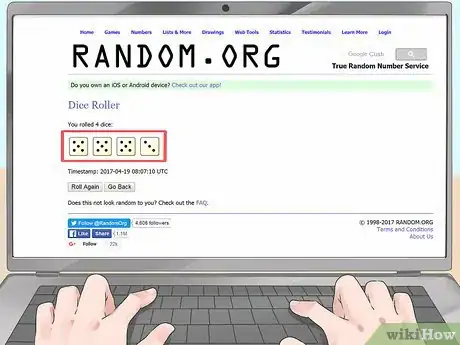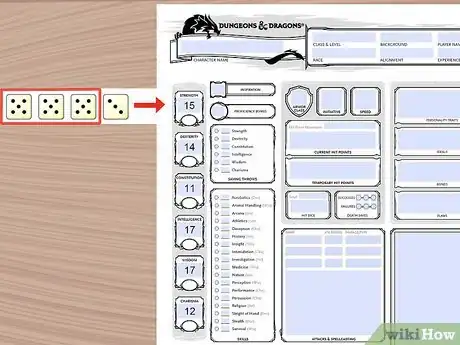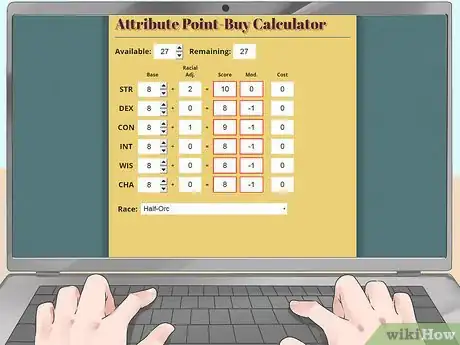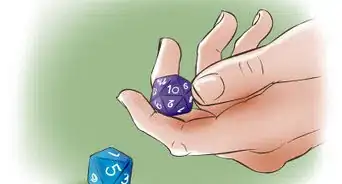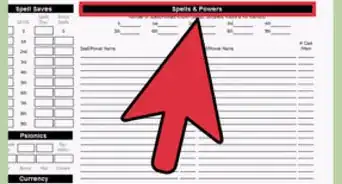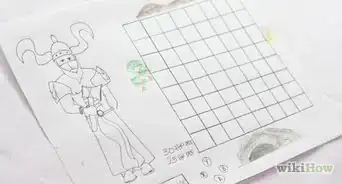This article was co-authored by wikiHow staff writer, Glenn Carreau. Glenn Carreau is a wikiHow Staff Writer, currently based in Los Angeles. With over four years of experience writing for several online publications, she has covered topics ranging from world history to the entertainment industry. Glenn graduated with honors from Columbia College Chicago, earning a B.A. in Interactive Arts and Media and a minor in Professional Writing. Today, Glenn continues to feed her lifelong love of learning while serving wikiHow's many readers.
This article has been viewed 10,117 times.
Learn more...
Ready to create a new character for Dungeons & Dragons 5th edition? Rolling stats is a vital part of character creation in D&D 5e; it determines what your character will be capable of when the game gets started! So, we’re here to show you exactly how to do it. Read on for a thorough introduction to rolling stats for D&D 5e, complete with alternative rolling methods and house rules for making the stat rolling process even easier.
Things You Should Know
- Roll your stats by rolling 4 x 6-sided dice, dropping the lowest number, and adding the remaining total. Do this for each stat (there are 6).
- Alternatively, calculate your stats using the Point Buy or Standard Array, which don’t require rolling and limit variation in character stats.
- Institute house rules if you want to roll stats and ensure you’ll get decent scores. House rules include rerolling 1s or group rolling and sharing stats with other players.
Steps
Rolling for Stats
-
1Roll 4 x 6-sided dice, remove the lowest, and add the other numbers. Calculating an ability score for your character is easy; grab 4 x 6-sided dice (4d6) and roll them. Then, find the lowest number you rolled and set it aside—you don’t need to include it in the final score. Add up the total of the other dice, and you have your ability score![3]
- For example, say you roll 4d6 and get a 2, 3, 5, and 6. Discard the 2 since it’s the lowest number, and add 3, 5, and 6 for a total of 14.
- Most character stats fall somewhere between an 8 (considered fairly low) and 18 (the highest you can roll).
- This is usually referred to as the “Manual/Rolled” method for calculating ability scores. It’s also the most widely used because it’s old-school; it's the original stat-rolling method from when D&D first began.
-
2Continue rolling 4d6 die until you have 6 stats calculated. Now that you have your character’s first stat, repeat the first step another 5 times—roll 4d6, remove the lowest number, add up the die, and make a note of the total. Once you have 6 stats prepared, you’re ready to assign them all to your character’s ability scores.[4]
- For example, after rolling the 14 above, you might continue rolling dice in groups of 4d6 and end up with the 6-stat array: 9, 10, 13, 14, 15, and 17.
- You can assign stats however you want, but it’s a good idea to hold off on assigning any until you’ve rolled all 6. That way, you can look at all your options and figure out where each number would best suit your character.
-
3Assign each calculated stat to one of your character’s ability scores. Think carefully about how you want your character to function before you match your rolled stats with your character’s 6 main ability scores. Most people tend to do this according to the ability scores that will be most valuable to their character, based on their class and abilities—but, ultimately, the choice is up to you.[5]
- For example, say you’re playing a sorcerer. Sorcerers rely on Charisma-based spellcasting in combat, making Charisma their primary stat. Assigning the 17 to your character’s CHA score would make the most sense!
- From there, assign the other stats based on how important you think they’ll be. For example, a sorcerer will probably make a lot of Concentration saves, which relies on Constitution, so assigning the 15 to their CON score is a solid choice.
- Some enjoy assigning stats based on roleplaying potential rather than effectiveness in battle. For example, sorcerers don’t really need strength, but you could play a ridiculously strong bodybuilder sorcerer anyway.
References
- ↑ https://5thsrd.org/rules/abilities/ability_scores/
- ↑ https://roll20.net/compendium/dnd5e/Ability%20Scores
- ↑ https://halflinghobbies.com/point-buy-standard-or-rolling-which-is-best-in-dd-5e/
- ↑ https://halflinghobbies.com/point-buy-standard-or-rolling-which-is-best-in-dd-5e/
- ↑ https://halflinghobbies.com/point-buy-standard-or-rolling-which-is-best-in-dd-5e/
- ↑ https://scrollforinitiative.com/2020/10/11/rolling-stats/
- ↑ https://5thsrd.org/rules/abilities/ability_scores/
- ↑ https://halflinghobbies.com/point-buy-standard-or-rolling-which-is-best-in-dd-5e/
- ↑ https://halflinghobbies.com/point-buy-standard-or-rolling-which-is-best-in-dd-5e/
- ↑ https://therpgacademy.com/house-rule-the-matrix-an-alternative-method-for-starting-pc-stats/
- ↑ https://therpgacademy.com/house-rule-the-matrix-an-alternative-method-for-starting-pc-stats/
- ↑ https://therpgacademy.com/house-rule-the-matrix-an-alternative-method-for-starting-pc-stats/
- ↑ https://therpgacademy.com/house-rule-the-matrix-an-alternative-method-for-starting-pc-stats/

